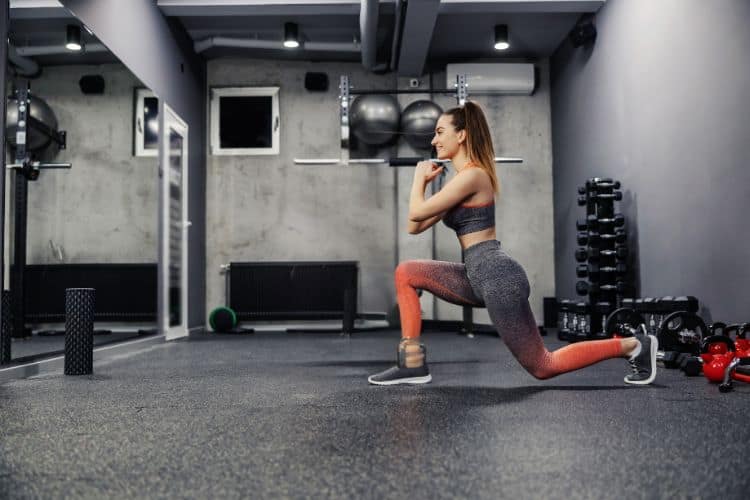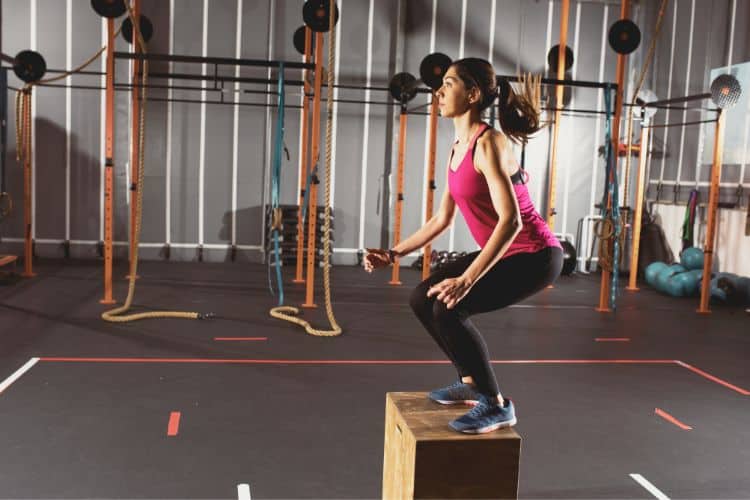Sign up for workout ideas, training advice, reviews of the latest gear and more.






If you’re short on time but serious about gaining strength and staying fit, a 30-minute full body strength training routine is your perfect solution. Whether you’re a beginner or an experienced lifter, this efficient workout targets all major muscle groups with minimal equipment, helping you build lean muscle, increase endurance, and boost metabolism.
This blog post provides a science-backed, structured 30-minute strength workout routine, adaptable for home or gym, and includes warm-up, compound movements, and a cool-down. Let’s dive in.
One of the most significant advantages of a 30-minute routine is its time efficiency. You don’t need to spend hours in the gym to see results. With the right structure, intensity, and focus, you can get a full-body workout that rivals longer sessions.
A full-body routine recruits multiple muscle groups, enhancing functional strength and increasing calorie burn during and after your workout. It’s ideal for people aiming to get stronger, lose weight, or maintain fitness on a tight schedule.
Strength training promotes lean muscle gain while revving up your metabolism. When combined with a balanced diet, this 30-minute full-body routine supports fat loss and body recomposition.
This routine can be performed with bodyweight, dumbbells, or resistance bands. For best results, use a moderate to heavy pair of dumbbells (or kettlebells) that allow you to complete all reps with good form, but still challenge you by the last few reps.
Optional Equipment:
A proper warm-up enhances performance and reduces injury risk. Spend about 5 minutes preparing your muscles and joints for intense activity.
This workout is broken down into 3 circuits, each targeting major muscle groups with compound movements and minimal rest. Perform each circuit for 10 minutes, cycling through the exercises 2–3 times depending on your pace.
1. Dumbbell Goblet Squats (12 reps)
Targets: Quads, glutes, hamstrings, and core.
Hold a dumbbell close to your chest. Keep your chest up and knees tracking over your toes.
2. Romanian Deadlifts (10–12 reps)
Targets: Hamstrings, glutes, and lower back.
Use dumbbells or a barbell. Focus on hip hinge, not squatting down.
3. Walking Lunges or Static Lunges (10 reps/leg)
Targets: Glutes, quads, and core.
Use bodyweight or dumbbells. Maintain upright posture.
4. Plank with Shoulder Taps (30 seconds)
Targets: Core, shoulders, and balance.
Keep hips stable. Alternate tapping each shoulder.
Repeat for 2–3 rounds depending on time.
1. Dumbbell Chest Press (12 reps)
Targets: Chest, triceps, shoulders.
Lie on a mat or bench. Press both dumbbells up and lower under control.
2. Bent-Over Dumbbell Rows (10–12 reps)
Targets: Back, biceps, rear delts.
Keep your back flat, elbows close, and pull weights toward your torso.
3. Push-Ups or Incline Push-Ups (10–15 reps)
Targets: Chest, triceps, core.
Modify as needed. Keep your body in a straight line.
4. Dumbbell Overhead Press (10 reps)
Targets: Shoulders, triceps.
Press both dumbbells overhead, avoiding arching your lower back.
Repeat 2–3 times in 10 minutes.
1. Dumbbell Thrusters (10–12 reps)
Targets: Full body – quads, glutes, shoulders.
Perform a squat into a shoulder press in one explosive motion.
2. Renegade Rows (10 reps/arm)
Targets: Core, back, arms.
In a plank position, row one dumbbell at a time. Avoid twisting your hips.
3. Dumbbell Russian Twists (30 seconds)
Targets: Obliques and core.
Twist side to side, holding a dumbbell or weight plate.
4. Burpee to Overhead Press (8–10 reps)
Targets: Full-body conditioning.
Complete a burpee and then press weights overhead as you stand.
Repeat for 2–3 rounds.
Proper recovery promotes flexibility and reduces post-workout soreness. Hold each stretch for 30–45 seconds.
For balanced progress, aim to perform this full body strength workout 3 times a week, with at least one rest or active recovery day between sessions.
Fuel your body with the right nutrients to enhance performance and recovery.
To avoid plateaus, gradually increase the challenge in your workouts using:
Track your progress weekly and make small adjustments every 2–3 weeks.
Stimulates muscle groups in one session, leading to increased hypertrophy over time.
Strengthens the movements you use in everyday life like squatting, pushing, pulling, and lifting.
More muscle equals higher resting calorie burn, aiding fat loss and long-term weight management.
When done in a circuit-style, full body strength training also provides cardiovascular benefits.
Eliminates the need for split routines while still hitting every major muscle group effectively.
Avoid these pitfalls to ensure optimal results:
Form and consistency are more important than lifting heavy at the start.
A 30-minute full body strength training routine is one of the most effective ways to stay strong, lean, and fit—whether you’re working out from home or the gym. With the right combination of compound exercises, structure, and progression, you can see visible results in just a few weeks.
Consistency is key. Stick with the plan, challenge yourself progressively, and complement your workouts with smart nutrition. You’ll be amazed by how much strength and stamina you can build in just half an hour a day.
Q: Can beginners do this 30-minute full body routine?
A: Yes! Start with lighter weights or bodyweight. Focus on form and gradually build up intensity.
Q: How many calories can I burn in 30 minutes of strength training?
A: It varies, but most people burn 180–350 calories, depending on intensity, body weight, and rest time.
Q: Can I do this workout daily?
A: It’s best to perform full-body strength training 3–4 times a week. Rest days are essential for muscle recovery and growth.
Ready to get stronger in just 30 minutes a day?
Start this strength routine today and feel the difference in your body and energy levels by the end of the week!
Want more effective workouts?
Subscribe to our blog or follow us on Pinterest for new routines, challenges, and fitness tips!
Stay up to date on the latest women’s health, fitness and lifestyle trends and tips.